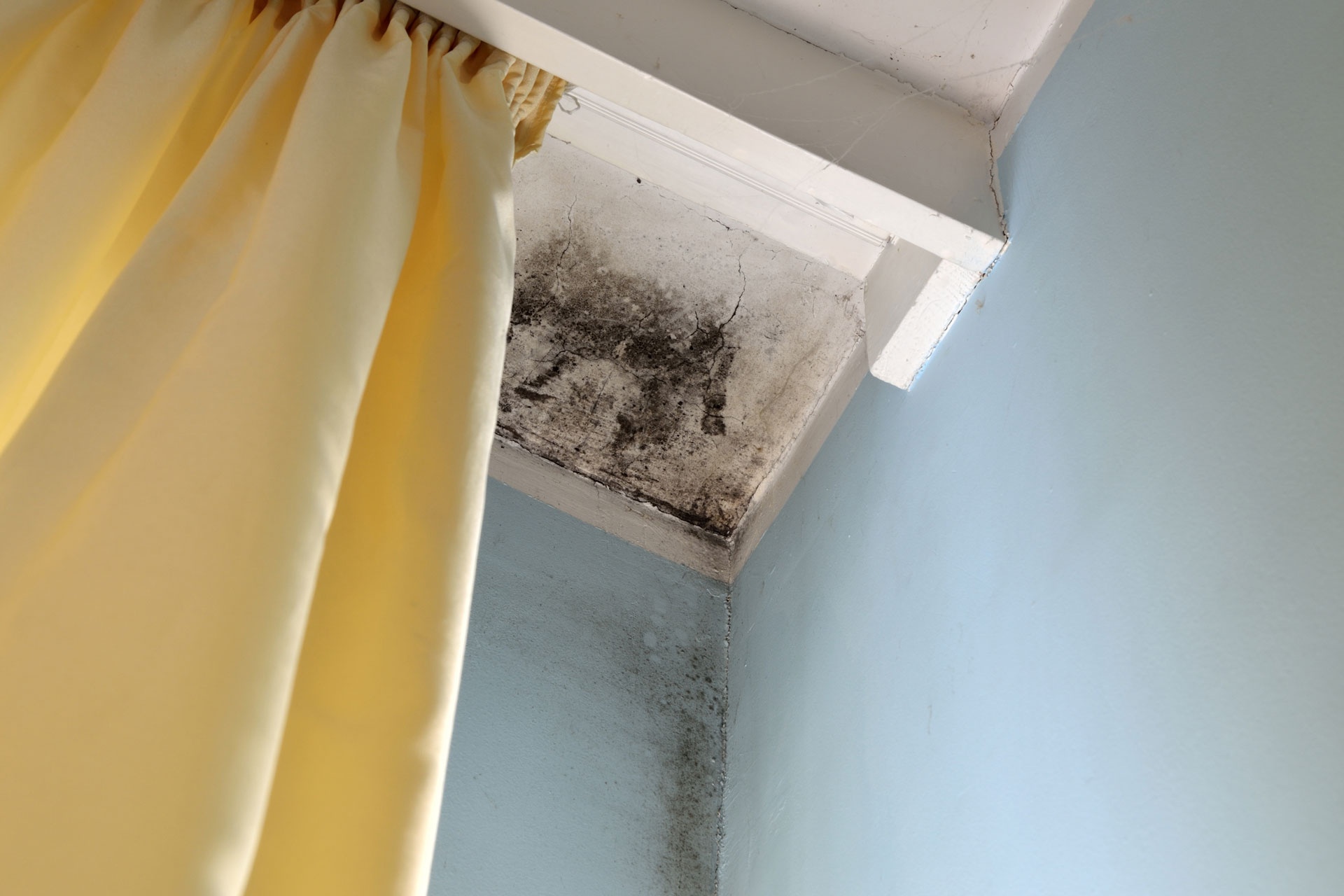
Do you see that? Probably not. Can you smell that? We’ll bet you can’t! While it can be very easy for an untrained eye to overlook it, mold is a living organism that can take many different shapes and can cause a wide variety of health issues if left untreated.
You may be wondering, “Where does all of this mold come from?” Well, mold is commonly found in moisture-rich, harder-to-detect areas of a home. In their early stages, mold spores are microscopic, making it easy for them to sneak undetected through windows, doors, and vents via many different circumstances.
- Water Damage: Moisture from leaky pipes, storm damage, or bathroom overflow create an environment in which mold can thrive.
- Leaky Appliances: Leaks from old refrigerators, dishwashers, and washing machines can eventually cause mold growth over time. Since mold thrives in damp areas, kitchens, bathrooms, and laundry rooms are typically the most at-risk.
- Remodeling: Mold that was concealed beneath old floors and behind old walls can become exposed during a home makeover, putting the rest of your home at risk.
- Leaky Roofs: Ever noticed drips, a sagging ceiling, or spots on your drywall during a storm? If so, your roof is probably leaking, putting your home at risk for some serious mold.
Regardless of how it made its way into your home, the presence of mold is a big issue that can be made in a number of distinct forms. Therefore, it’s important to familiarize yourself with these different forms so you can be prepared to recognize and combat them in a timely manner.
Alternaria
As one of the most common forms of allergenic mold in the world, Alternaria can typically be found in showers, bathtubs, below leaking sinks, or any other area in a home that has been affected by water damage. If left untreated, Alternaria can cause asthma-like symptoms, including asthma attacks and allergic reactions.
Aspergillus
This is another one of the most common allergenic molds found inside homes. With 185 other species that can vary in color, Aspergillus can cause asthma attacks, lung infections, and respiratory inflammation.
Chaetomium
With a presence that typically gives off a musty odor, Chaetomium is another mold that is most commonly found in drywall, roofs, basement foundations and other water-damaged areas of a home. Chaetomium can cause minor health effects such as skin and nail infections, but can also worsen in some cases, leading to immune system-damaging development of mycotoxins.
Cladosporium
Another allergenic mold, Cladosporium can be found in warm or cold conditions and often live in indoor fabrics, upholstery, and carpets. Exposure to this mold can cause rashes, lesions, asthma, lung infections, and sinusitis.
Fusarium
Much like Cladosporium, Fusarium can also thrive and spread in a variety of temperatures. It’s commonly found in homes with water damage and can lead to skin infections and allergic reaction symptoms. Prolonged exposure, however, can cause far more severe conditions such as bone infections, brain abscesses, hemorrhages, and even internal bleeding.
Stachybotrys
You’ve probably heard of this one, as it’s commonly referred to simply as “black mold.” Black mold thrives in damp, humid areas and can cause difficulty breathing, sinusitis, fatigue, and other more serious allergic reactions. Stachybotrys can be especially harmful to children, as it is linked to neurological and pulmonary problems with those who have been exposed.
As you can tell, mold is no joke. While some may be milder, some types of mold can lead to very severe consequences if left undealt with. No matter which kind of mold your home may be facing, Carpet Tech offers a way to deal with it.
Our mold removal services are designed to target and get rid of the mold in your home, keeping it (and everyone inside) safe. Our process is thorough and includes a complete investigation, repair, and remediation of the problem, as well as a professional air duct cleaning, which targets any remaining spores that may be present in your home’s air.
If your home recently faced a flood and you’re worried that it may be suffering from the presence of mold, don’t wait another second! Click here or give us a call at 888.667.1785 to get started with your free water damage restoration estimate.






